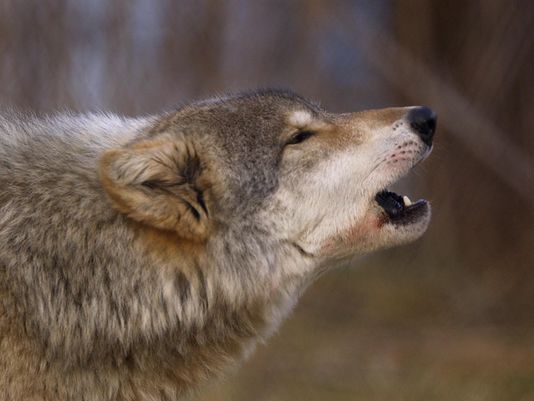
Causes of death: sources of wolf mortality include disease, starvation, collisions with cars, conflicts with wolves or other carnivores, and – most importantly – killing by humans. In the U.S. wolves are killed by private individuals and government agencies. Methods include shooting, leghold trapping, and aerial gunning. Several hundred wolves are killed each year in the continental U.S. In the Northern Rocky Mountains alone, the numbers range from 386 in 2008 to well over 500 in years 2009 and 2011. The numbers hide a deeper issue – wolves mean a lot to each other. The killing of an individual wolf has tremendous consequences that humans are just starting to grasp. Members of a pack can go to heart-breaking lengths to be together. Wolves can suffer physical, psychological, and emotional trauma. Wolf pack members associate with each other, and those packs maintain networks with other packs. Social animals, wolves experience disruption when fellow pack members are killed, which can affect not only individual packs but the entire network of wolves in a region. Social disruption can cause packs to disband and elimination of the breeding pair can lead to the loss of pups from starvation.
Table 1. Wolf Mortality in the Northern Rocky Mountains, 2008-2011 (data: USFWS Annual Reports) | ||||||
2008 | Livestock Protection1 | Sport Hunters | Poach/Law Enforcement Investigation | Vehicle | Unknown/ Other/ Natural | Total |
ID | 108 | 0 | 13 | 10 | 18 | 149 |
MT | 110 | 4 | 8 | 16 | 20 | 158 |
WY | 46 | 11 | 8 | 2 | 12 | 79 |
Total | 264 | 15 | 29 | 28 | 50 | 386 |
2009 | Livestock Protection1 | Sport Hunters | Poach/Law Enforcement Investigation | Vehicle | Unknown/ Other/ Natural | Total |
ID | 93 | 135 | 12 | 0 | 32 | 272 |
MT | 145 | 72 | 16 | 8 | 16 | 257 |
OR | 2 | 0 | 0 | 0 | 0 | 2 |
WY | 31 | 0 | 7 | 0 | 2 | 40 |
Total | 271 | 207 | 35 | 8 | 50 | 571 |
2010 | Livestock Protection1 | Sport Hunters | Poach/Law Enforcement Investigation | Vehicle | Unknown/ Other/ Natural | Total |
ID | 80 | 48 | 5 | 0 | 11 | 144 |
MT | 141 | 0 | 13 | 11 | 13 | 178 |
UT | 1 | 0 | 0 | 0 | 0 | 1 |
WY | 40 | 0 | 13 | 0 | 5 | 58 |
Total | 262 | 48 | 31 | 11 | 29 | 381 |
2011 | Livestock Protection1 | Sport Hunters2 | Poach/Law Enforcement Investigation | Vehicle | Unknown Other Natural | Total |
ID | 63 | 200 | 11 | 7 | 0 | 281 |
MT | 64 | 121 | 8 | 8 | 2 | 203 |
OR | 2 | 0 | 0 | 0 | 0 | 2 |
WY | 36 | 0 | 6 | 1 | 8 | 51 |
Total | 165 | 321 | 25 | 16 | 10 | 537 |
Tangles with livestock: Much of the historic killing of wolves was motivated by livestock ranchers and carried out by federal agents and others. As bison and other ungulates were hunted out in the late 1800s and early 1900s and replaced by livestock, wolves had little choice but to feed on livestock. This prompted the concerted extermination effort which was almost completely successful throughout the lower 48 U.S. states. Today, reintroduced wolves generally hunt native prey, but the anti-wolf belief systems of the livestock industry have not faded away. Unsupported claims about wolves’ appetites for livestock has even lead to their delisting although wolves and all carnivores in total have killed less than one percent of the American cattle inventory. See Northern Rocky Mountain Wolves Report pages 20 -24 for details.
Every wolf matters: Very intelligent, wolves are capable of a complex range of emotions, including joy, pleasure, happiness, empathy, compassion, sympathy, grief, sadness, and jealousy. Wolves are dependent on each other, whether their duties are on the hunt or back at the nursery. In 1998, a pack of Mexican wolves feverishly dug out around a log that the mother wolf was stuck in, successfully freeing her. Other fascinating accounts of relationships between wolves have been recorded. Ernest Thompson Seton wrote about a pair of wolves he hunted down in New Mexico, Lobo and Blanca. Lobo was caught only when Seton captured and killed his mate. While responsible for the deaths of this precious pair, Seton later wrote, “Ever since Lobo, my sincerest wish has been to impress upon people that each of our native wild creatures is in itself a precious heritage that we have no right to destroy or put beyond the reach of our children.”
Natural History – WildEarth Guardians.